Table of Contents
- Abstract
- What is a Computer Operating System?
- A little History of Software
- Linux the Fastest growing OS in the world
- Linux runs Super Computers
- Linux as used in Routers
- Linux for Embedded Systems
- Linux in Education
- Linux for Servers
- Linux hosts Virtual Machines
- Linux on Smart Phones
- Linux for people who what to control their computers
Abstract
What is it about linux that makes it so popular on so many platforms.
Linux for Super Computers
Linux for Routers
Linux for Embedded systems
Linux for Servers
Linux for Virtual Machines
Linux for Smart Phones
Linux for people who want control of their computer.
What is a Computer Operating System?
An operating system, or OS, is a software program that enables the computer hardware to communicate and operate with the computer software. Without a computer operating system, a computer would be useless. Operating system ABCs
This rather blunt definition gives us a strating point for understanding a conmputer.
Basically a computer is nothing more than a fancy calculator. Or at least that is where they originally came from. The CPU or Central processing unit is a collection of switches which add, and subtract numbers. These silicon calculators think in Ones and Zeros known as BITS and can do tricks like shifting a the bits in a Byte, a collection of 8 bits, right or left.
The OS has another function besides passing instructions and data to the CPU. This is the computer hardware interface which allows signals to pass into and out of the computer. The interfaces on the personal computer consist of keyboards, video displays, networks and ports, to name a few.
This is interesting, but why do I care?
For most purposes it doesn’t matter which operating system you use because in the modern computing environment operating systems are becoming increasingly irrelevant.
Hardcore Mac users had no trouble with the PC. Hope-to-die Windows users didnt flinch if they had to use the Mac and both groups never hesitated to use the Linux machine. “Do Operating Systems Matter Anymore?”
This might not jive with your view of the computer world, but in the end the computer is the tool we use to manipulate and share data. Whether you are playing games, reading the news, checking your bank account, saving and sharing pictures, or even writting talks like this the OS is only the means to an end.
Internet communication standards make it possible for all computers to participate seamlessly in the worldwide network, regardless of the specifics of their hardware, operating systems or software and, because so much of the real computing is done remotely on the local network or the Internet, those standards have trivialized the differences between computers and their operating systems. In other words, although there are important technical differences between Mac OS, Windows and Linux, the main desktop operating systems in use today, for most users, the choice of one over the other is dictated more by personal style and work habits than any objective measure of the qualities of the systems themselves. “Do Operating Systems Matter Anymore?”
A little History of Software
The early computers were mainframes where only businesses, the government and the universities could affort the multi-million dollar machines. The first programs were hard coded in machine. But given the cost of running the machines programs, known as libraries, came into use. These monitors were the precursor of the operating system.
The Unix operating system was developed at AT&T Bell Laboratories in the late 1960s, originally for the PDP-7, and later for the PDP-11. Because it was essentially free in early editions, easily obtainable, and easily modified, it achieved wide acceptance.
By widespread use it exemplified the idea of an operating system that was conceptually the same across various hardware platforms. It still was owned by AT&T Corporation and that limited its use to groups or corporations who could afford to license it. It became one of the roots of the free software and open source movements. History of operating systems
Free Software Foundation

In the 1970s Stallman worked for MIT at the college’s Artificial Intelligence Lab on Unix machines. The community of programmers passed software around the world freely, modified one another’s work, and shared in the benefits of finely tweaked projects.
By the early 1980s corporate America began to take notice of the power of computers and the potential market for personal computing. As the AI Lab project was disbanded by MIT, many of the programmers went to work in the commercial arena developing software for the retail market.
Richard Stallman was and remains vehemently opposed to the commercialization of software. For Stallman the AI Lab was a utopia that worked. While some of his colleagues were refocusing their efforts on software for sale, Stallman began formalizing a project that would keep software free. He called his philosophy “Free Software” and dubbed the project “GNU” (pronounced “Guh-new”), which stands for Gnu, is Not Unix. Stallman says that the “G” has no meaning and is part of the recursive acronym. The GNU project grew into Free Software Foundation, which Stallman officially founded in 1984. Richard Stallman and GNU
This movement started as a protest tothe commericalization of software. The issue is not that people should not get paid to write software. Many of the people who write free software are paid. And companies can make money from selling services based on free software. As a prime example IBM’s ecommerce WebSphere Commerce V7 runs on both Red Hat Enterprise Linux and SUSE Linux Enterprise Server. IBM WebSphere Commerce
Another successful use of software is the apache web server. As of March 2013 Netcraft listed the following web site statistics:
| Web Server | Number of Sites | Percentage |
|---|---|---|
| Apache | 341,021,574 | 54.00% |
| Microsoft | 113,712,293 | 18.01% |
| nginx | 85,467,555 | 13.53% |
| 22,605,646 | 3.58% |
This is not to ignore the many other pieces of software such as Firefox, or Open Office, or Gimp among many others. Many of which work in both Free and Propritary OSs.
Linux
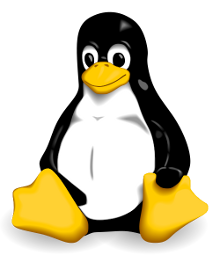
During much of the work on computers in universities the programmers became familiar with the unix system because of a consent decree with the justice department by AT&T
Under a 1956 consent decree in settlement of an antitrust case, AT&T (the parent organization of Bell Labs) had been forbidden from entering the computer business. Unix could not, therefore, be turned into a product. Indeed, under the terms of the decree, Bell Labs was required to license its non-telephone technology to anyone who asked. Ken Thompson quietly began answering requests by shipping out tapes and disks, each accompanied by — according to legend — a note signed, “Love, Ken”. Unix
Since universities used the source code from AT&T unix to learn about programming an operating system. It was common for university students to rewrite portions of the OS and try them out on the unix boxes. This tinkering became the origin of BSD (Berkeley Software Distribution) unix system. After AT&T disallowed the use of their source code, professors like Andrew S. Tanenbaum created their own version of unix which became know as Minix so that students could continue to study OS source code.
It was a student like this in Finland named Linus Torvalds who created his own version of unix. The difference between this student and many others was that he posted his version of unix on 5 October 1991 and made it available for others. This is the software that later was named Linux.
By combining the Linux OS software with the GNU tools from the FSF Free Software Foundation a complete working Operating System became available for others to use and modify.
The Linux system has been reconfigured and distributed by a number of different groups. Since the source code is readily available the multiple versions and distributions are possible. Some people claim that this diversity of Linux distributions is detremental to Linux I would argue quite the opposite. As a comparison, how would you feel if there was only one car company that only offered one version of a car, instead of the multiple car companies we have today.
How does this diversity help Linux?
Due to the availability of the source code, talented programmers are able to bend the OS in multiple directions. There are distributions like Red Hat and Suse which aim at very stable system best suited to businesses. There are distributions like Puppy and DSL which are aimed at working on small computer systems. There are distributions like 64Studio and Ubuntu Studio which are aimed at music and video production. There are distributions like Trinity Rescue and Knoppix which are good as rescue CD. There are distributions like raspberry-pi for introducting people to computers.
The availability of source code allow anyone with the skill to create their own version of Linux. Add to this an explosion in affordable hardware for dedicated systems and you have an explosion in this little OS.
Linux the Fastest growing OS in the world
I have defined above why I think Linux is a good operating system. But how can I claim it is the fastest growing OS. Lets have a look at a few sources.
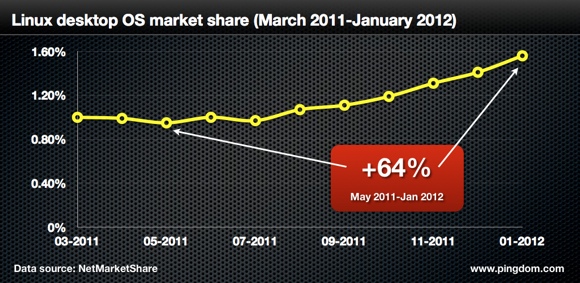
And Linux on the desktop is still in the low single digits by any measure we can find, but there may be hope as it has, based on one source, increased 64% in market share in the nine months from May 2011 to January 2012. Linux is the world’s fastest growing desktop OS – up 64% in 9 months

Linux is a powerful, non-proprietary, standards-based operating system that is currently the fastest growing computer operating system on the planet. Linux offers speed, performance, stability, and reliability that rivals (or surpasses) that of commercial operating systems costing hundreds or thousands of dollars. Linux contains all the features required of modern desktop PCs, corporate file servers, firewalls, routers, and Internet servers. Its install base is conservatively estimated at over 10,000,000, and is growing at a rate of approximately 3% per week. The Linux Operating System
Even IBM uses Linux
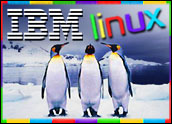
Linux® and IBM have partnered to drive the open standards revolution, moving business beyond the limits of proprietary software and hardware solutions. The entire IBM Systems product line is Linux enabled, making it easy for any size business to take advantage of the power of open standards. And because Linux is an open operating system it benefits from a broad developer base, making it one of the fastest growing operating systems in the world. To simplify your business even further, Linux supports greater and growing interoperability between diverse software and hardware technologies, which leads to a reduction in IT management costs. Browse systems by Operating System
Linux runs Super Computers
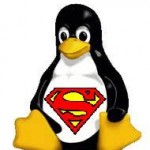
We have talked about how the Linux system allows anyone to create their own system using the Linux OS. The current trend in super computers is called massively parallel. What this means is instead of trying to build one super fast CPU, why not break the problems into multiple pieces and solve the pieces in parallel.
Once people hit upon the idea of doing super computing on many computers at once they needed an operating system which could be tuned and modified to work across many computers. This idea lead to the development of a Linux like system called a Beowulf cluster.
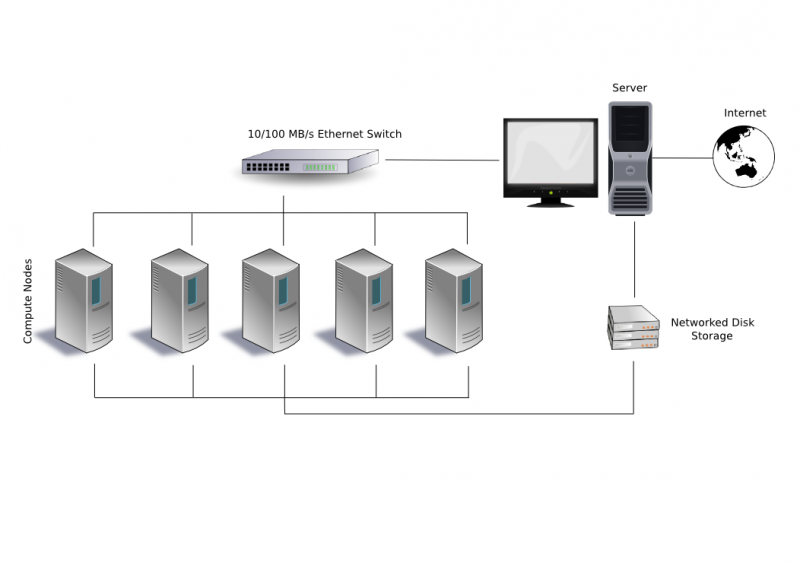
The faster a computer goes, the more likely is to have Linux at its heart. The most recent Top500 list of supercomputers shows that, if anything, Linux is becoming even more popular at computing’s high end.
In the latest Top500 Supercomputer list, you’ll find when you dig into the supercomputer statistics that Linux runs 457 of the world’s fastest computers. That’s 91.4%. Linux is followed by Unix, with 30 or 6%; mixed operating systems with 11 supercomputers, 2.2%. In the back of the line, you’ll find OpenSolaris and BSD with 1 computer and–oh me, oh my–Windows also with just 1 supercomputer to its credit. That’s a drop from 4 in the last supercomputer round up in June. Where Linux crushes Windows like a bug: Supercomputers
The question you are probably asking is why use Linux. The answer as specified in the article, Why Do Super Computers Use Linux? is:
Modular nature of Linux
Generic Nature of Linux Kernel
Scalability
Open Source Nature
Community Support
Cost
Mark Seager serves as the assistant department head for advanced technologies at the Lawrence Livermore National Laboratory in Livermore, Calif. The site (Lawrence Livermore National Laboratory) operates ten machines on the Top 500 list, including Blue Gene/L, the world’s most powerful supercomputer, and Thunder, which ranks fifth. The supercomputers, of course, use Linux as an OS. Mark Seager says “Linux has dominated the marketplace for high-performance computing”. High-performance Linux clustering is a two-part series providing background on high-performance computing that is only possible with Linux. Why Do Super Computers Use Linux?
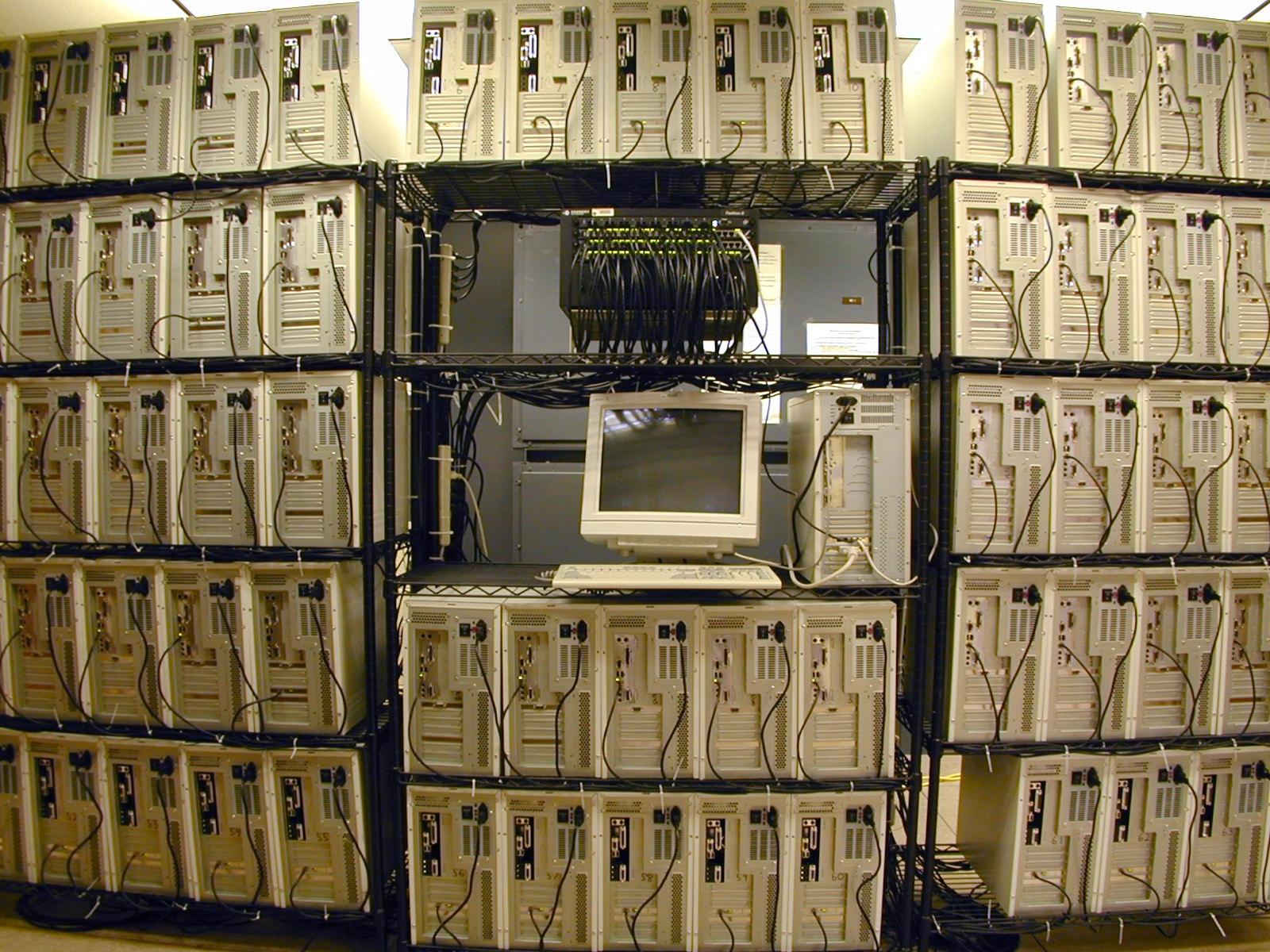
And finally for any of you who think a super computer is beyond you, here is a link for you, Building a simple Beowulf Like Cluster with Ubuntu
Linux as used in Routers
Given the open source nature of Linux adapting it as a router/firewall is a natural. Once again we see clever people using the open source software for a mission critical application.
The Linux operating system makes a perfect solution to your routing needs. With phenomenal uptime and simple configuration, Linux can provide you with much-needed relief from your routing woes. In this Daily Drill Down, I will introduce you to routing and then to routing with the Linux operating system. Understand the basics of Linux routing
But you say where do you get the hardware to go with the software. There are two answers, either you could purchase a Cisco-Linksys WRT54GL Wireless-G Broadband Router and add the software from Tomato. Or you could purchase a BUFFALO AirStation HighPower N300 Wireless Router WHR-300HP with the DD-WRT software already installed.
To give you an idea of bhe breath of Linux router software, here is a web page from Wikipedia, List of router or firewall distributions which lists 33 Linux distributions of router software.
As is typical of Linux, here is a web page from IBM Developer Works web site on Build a network router on Linux.
Linux for Embedded Systems
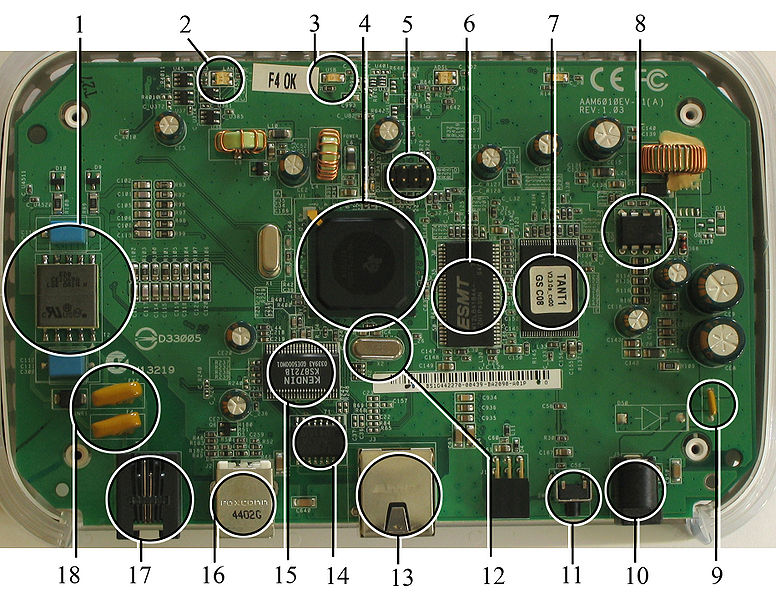
Lets start by discussing what is an embedded system.
An embedded system is a computer system designed for specific control functions within a larger system, often with real-time computing constraints. It is embedded as part of a complete device often including hardware and mechanical parts. By contrast, a general-purpose computer, such as a personal computer (PC), is designed to be flexible and to meet a wide range of end-user needs. Embedded systems control many devices in common use today. Embedded system
So why would anyone choose Linux for a embeded system? The answers are much the same as for super computers. It is open source so the code is available. Since there are many people workng on it there is a large base of knowledgeable developers.
As a supplier of embedded processor boards, SBS Technologies provides Linux support for CompactPCI and VME platforms used in communications, military, aerospace, and industrial automation applications. With more than 200 different vendors offering solutions based on different kernel releases, Linux is somewhat of a moving operating system (OS) target. Nevertheless, SBS has found that many developers are still selecting Linux over other operating system alternatives for embedded development projects, especially as complex network-edge devices increasingly come under the purview of network administrators. Why Choose Linux for Embedded Development Projects?
Constructing an embedded system with Linux is often seen as a complex undertaking. This article is the first in a series which will show the fundamental aspects of constructing such systems and enable the reader to apply this knowledge to their specific situation. Simple Embedded Linux System
After a survey of Embedded Linux applications and their environments, Darrick Addison gives you step-by-step instructions for setting up a suitable hardware and software environment for developing those applications. Embedded Linux applications: An overview
From wrist watches to cluster-based supercomputers
Linux in Education
Although is the Linux OS is not designed for education directly, it’s open format allow people to create tools for education.
We often talk about the higher education bubble and it being on the verge of bursting but what does that really look like? How does a bubble form and what causes it to burst? The following two part infographic does a great job explaining just that by showing where higher education has been, where we are, and without change where we will be. To me, it further highlights why open source technology and open source principles have such an important role in education reform from lowering costs to demonstrating a better way for educating our youth in the 21st century and beyond. Infographic: The higher education bubble
UberStudent
UberStudent is a free and open-source computer operating system and collection of programs for higher education and college-bound secondary students, their teachers and schools, and researchers, knowledge workers, and lifelong learners.
Dubbing itself “Linux for Learners”, UberStudent describes itself as “a cohesive academic success curriculum integrated into an installable, easy-to-use, and full-featured learning platform” aimed at increasing student learning and lifelong computer fluency. Its additional aim is to increase the adoption of free and open-source computing platforms, like itself, within higher education and secondary schools.UberStudent
Education-Li-f-e
This release includes carefully selected software for students, educators as well as parents. The software selection encompasses everything required to make computers productive for either home or educational use without having to install anything additional.
The Live DVD contains KIWI-LTSP server that can be enabled even by non-technical user, it comes bundled with tons of useful applications from openSUSE Education, Build Service and Packman repositories. With the KIWI-LTSP server you can PXE(network) boot other PCs to use this live DVD without installing or modifying anything on them. Booting from hard disk again will leave those PCs as they were.(Please note that running LTSP from Live DVD/USB is meant for demo/testing purpose only, install on the hard disk to use it in production).
This distribution includes LAMP (LAMP stands for Linux, Apache, MySQL and PHP) that is needed for developing or hosting PHP websites and all other major development tools.
The aim of this DVD is to provide complete education and development resources for parents, students, teachers as well as IT admins running labs at educational institutes, if you think there is something missing that you absolutely must have on the DVD, drop us a line see “Communicate” here. openSUSE:Education-Li-f-e
Edubuntu
Edubuntu is a grassroots movement, we aim to get Ubuntu into schools, homes and communities and make it easy for users to install and maintain their systems.
We are students, teachers, parents and hackers who believe that learning and knowledge should be available to everyone who wants to improve themselves and the world around them. Edubuntu
One Laptop per child
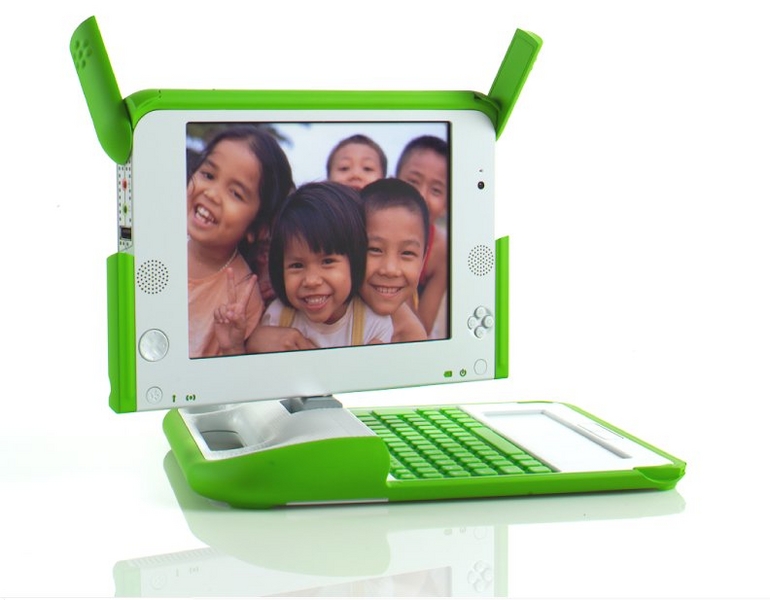
One laptop per child is a concept. It is an education project, not a laptop project. It can be implemented in more than one way, by no means limited to the embodiment of the OLPC non-profit associations so-called $100 Laptop. The argument for olpc is simple: many childrenespecially those in rural parts of developing countrieshave so little access to schoolin some cases just a treethat building schools and training teachers is only one wayperhaps the slowest wayto alleviate the situation. While such building programs and teacher education must not stop, another and parallel method advised by OLPC is to leverage the children themselves by engaging them more directly in their own learning. It may sound implausible to equip the poorest children with connected laptops when rich children may not have them, but it is not. Laptops can be affordable and children are more capable than they are given credit for. One Laptop per Child
Qimo
Qimo is a desktop operating system designed for kids. Based on the open source Ubuntu Linux desktop, Qimo comes pre-installed with educational games for children aged 3 and up. Qimos interface has been designed to be intuitive and easy to use, providing large icons for all installed games, so that even the youngest users have no trouble selecting the activity they want. Qimo for Kids
Knosciences
Knosciences CD let you test many recents and powerful free applications for Education Knosciences is a GNU/Linux Bootable CD for Education
The Barnix distribution was designed by students at Barnfield College to ease people into the world of Linux
10 Linux applications that are perfect for educational environments
UKnow4Kids

Here, you can learn about the UKnow4Kids Live DVD, a Linux distribution compiling educational and gaming software for children 2- to 10-years-old. The distribution is intended for broad usage by a non-technical audience (regular parents). Because UKnow4Kids runs as a “live DVD,” no installation or configuration is required, it is essentially indestructible for children’s use, and it is impossible for the hard drive of the host PC to be affected when the live DVD is running. UKnow4Kids also runs well on old Intel hardware, so it should run fine on a Pentium II with 256 MB RAM (that’s what my kid uses) or better. UKnow4Kids provides a familiar Windows-like/Mac-like user experience, requiring only minimal computer experience to run. To give you a headstart, UKnow4Kids automatically loads the premiere educational application for young children, Gcompris. UKnow4Kids
Kuliax
A relatively complete GNU/Linux Live distribution developed and desktop optimized, for learning, research, and development use, primarily in higher education. Kuliax
GNU/Linux Distribution for Higher Education
Linux for Servers
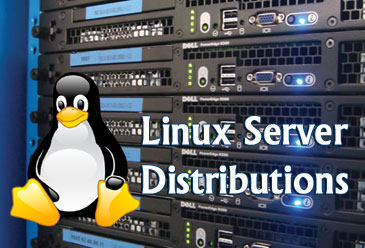
The back bone of any office are it’s servers. These store data, handle email, serve printers, host databases, and provide the general background for the office environment. These headless computers are often configured and maintained by the IT (Information Technology) personel who tend to be sophisticated computer professionals. For these people a stable, dependable OS are a prime concern. In the past this was typically the domain of Unix. The Unix systems was chosen because of better handling of multiple users, better immunity from viruses, reliable performance, scripted tasks, and remote management. These system allowed for unlimited disk space, multiple network adapters, shared serial ports, and even distributed processing. So it is not a surprise that Linux has been taking over these server functions.
Linux – fastest growing in the server operating system market
Successful market adoption. GNU/Linux is the fastest growing operating system in the world. It made 27% of the world servers in the year 2000 according to IDC . GNU/Linux is making a great success in the Desktop and embedded systems as well. Success stories of small, medium, and large organizations adopting GNU/Linux are numerous. Amazon.com saved $17 millions on 2001 due to migrating to GNU/Linux based systems! Google, the world’s number one search engine, is built entirely on Linux. Using 10,000 Linux boxes and forming one of the largest Linux farms ever! GNU/Linux
Linux hosts Virtual Machines
One of the largest vendors of Virutal Systems is VMware. In the past they would install their virtual machine on top of either Windows or Linux. But if you purchase their software for a dedicated machine as is done by many business, the OS the underlies their Virtual machine is Linux.
Which Virtual Machine Application Is Best? ( Poll Closed ) Parallels 13.1% (2,934 votes)
| Virtual Machine | Percent | Number of Votes |
|---|---|---|
| VirtualBox | 50.29% | (11,261 votes) |
| QEMU | 1.81% | (405 votes) |
| VMware | 30.39% | (6,806 votes) |
| Windows Virtual PC | 3.64% | (816 votes) |
| Other: | 0.76% | (171 votes) |
Total Votes: 22,393 Five Best Virtual Machine Applications
VirtualBox
VirtualBox is a powerful x86 and AMD64/Intel64 virtualization product for enterprise as well as home use. Not only is VirtualBox an extremely feature rich, high performance product for enterprise customers, it is also the only professional solution that is freely available as Open Source Software under the terms of the GNU General Public License (GPL) version 2. See “About VirtualBox” for an introduction. Welcome to VirtualBox.org!
QEMU
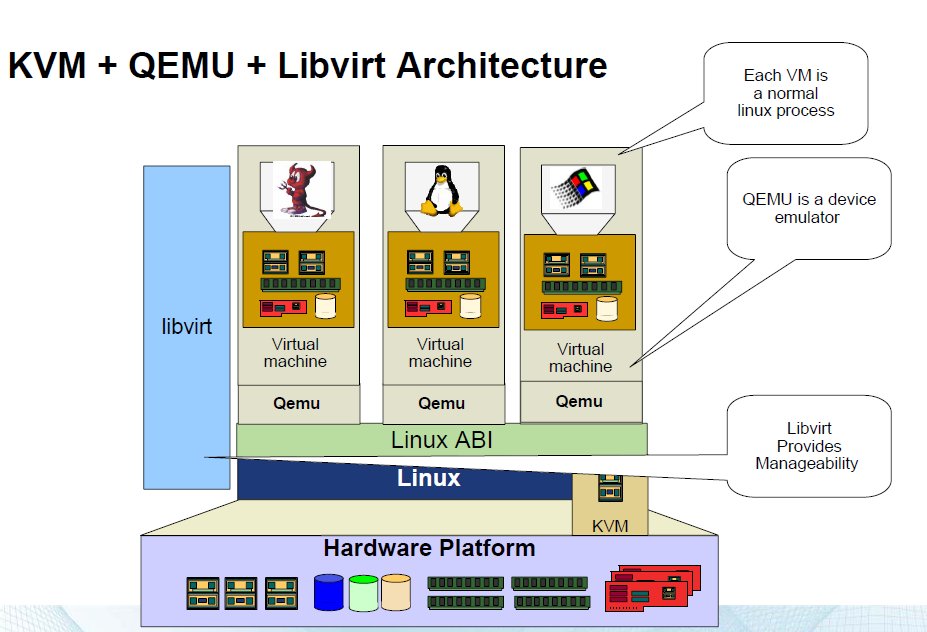
QEMU is a generic and open source machine emulator and virtualizer.
When used as a machine emulator, QEMU can run OSes and programs made for one machine (e.g. an ARM board) on a different machine (e.g. your own PC). By using dynamic translation, it achieves very good performance.
When used as a virtualizer, QEMU achieves near native performances by executing the guest code directly on the host CPU. QEMU supports virtualization when executing under the Xen hypervisor or using the KVM kernel module in Linux. When using KVM, QEMU can virtualize x86, server and embedded PowerPC, and S390 guests. Qemu Open Source Processor emulator
Kernel Base Virtual Machine
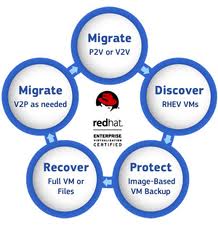
KVM (for Kernel-based Virtual Machine) is a full virtualization solution for Linux on x86 hardware containing virtualization extensions (Intel VT or AMD-V). It consists of a loadable kernel module, kvm.ko, that provides the core virtualization infrastructure and a processor specific module, kvm-intel.ko or kvm-amd.ko. KVM also requires a modified QEMU although work is underway to get the required changes upstream. Kernel Based Virtual Machine
Xen
The Xen Hypervisor, is an open source virtualization platform that powers the world’s largest clouds in production and is the foundation of many commercial products. Xen powers public clouds such as Amazon Web Services, Rackspace Public Cloud and many others. Examples of Xen based server products include Huawei UVP, Oracle VM and XenServer. Examples of client products and appliances include QubesOS, XenClient and Netscaler. Xen is 9 years old, mature and its stability and versatility is second to none. What is Xen?
Linux on Smart Phones
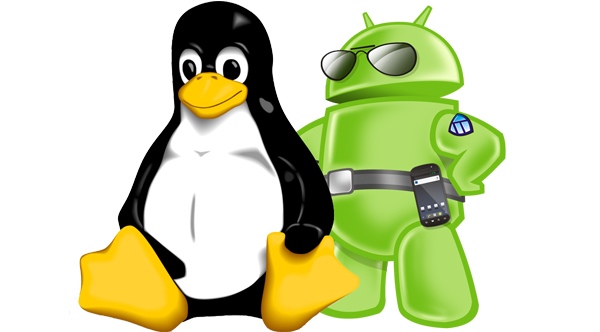
Android is a Linux-based operating system designed primarily for touchscreen mobile devices such as smartphones and tablet computers. Initially developed by Android, Inc., which Google backed financially and later purchased in 2005,[9] Android was unveiled in 2007 along with the founding of the Open Handset Alliance: a consortium of hardware, software, and telecommunication companies devoted to advancing open standards for mobile devices.[10] The first Android-powered phone was sold in October 2008. Android (operating system)
Android powers hundreds of millions of mobile devices in more than 190 countries around the world. It’s the largest installed base of any mobile platform and growing fastevery day another million users power up their Android devices for the first time and start looking for apps, games, and other digital content.
Android gives you a world-class platform for creating apps and games for Android users everywhere, as well as an open marketplace for distributing to them instantly. Android, the world’s most popular mobile platform
The Android Operating System is a Linux-based OS developed by the Open Handset Alliance (OHA). Android OS shipments overtook those of Symbian in the 4th Quarter of 2010, dislodging the later from the number one spot among smartphone OSs.
Androids underlying kernel is based on Linux, but it has been customized to suit Googles directions. There is no support for the GNU libraries and it does not have a native X Windows system. Inside the Linux kernel are found drivers for the display, camera, flash memory, keypad, WiFi and audio. The Linux kernel serves as an abstraction between the hardware and the rest of the software on the phone. It also takes care of core system services like security, memory management, process management and the network stack. Android Operating System
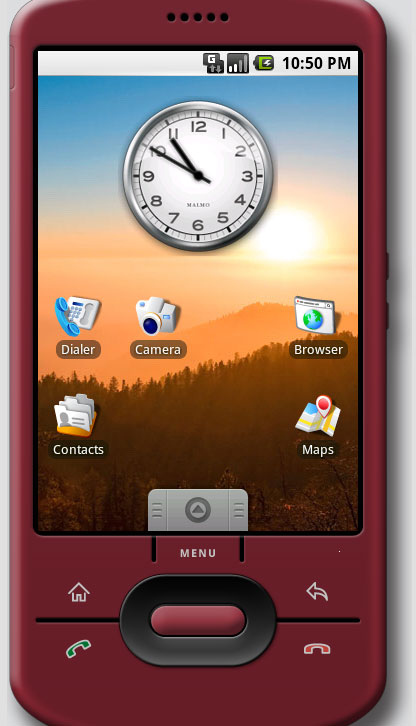
A broad alliance of leading technology and wireless companies recently joined forces to announce the development of Android, an open and comprehensive platform for mobile devices. Google Inc., T-Mobile, HTC, Qualcomm, Motorola and others have collaborated on the development of Android through the Open Handset Alliance, a multinational alliance of technology and mobile industry leaders. At the core, the linux based Android platform features a virtual machine, called Dalvik, that uses another format for the class files but otherwise looks very much like Java. They also provide a utility that can convert Java class files to so called DEX files: the native Dalvik format. It is a VM for applications and is itself a so-called MVM i.e., able to run several programs in the same address space where the individual applications can communicate with each others via (remote) services. Java code generally runs on Dalvik without changes to the source code. Android : a linux-based mobile operating system (Slide Show)
Android and Chrome OS are directly based on Linux and wouldnt exist without previous Linux development. The team at Canonical helped develop Chrome OS, under contract, and I doubt whether Google would have proceeded with that operating system without being able to assure hardware compatibility and other important things through long-standing previous software development. Despite Naysayers, Android Is Definitely Linux-based
Linux for people who what to control their computers
We have finally returned to the day to day Linux user. Although it might seem that a considerable amount of the appeal of linux is to the sophisticated user, there is also a wide range of benefits to the casual user.
Some of the more obvious reasons are the free cost of the OS. But the OS lso gives the users the ability to change the desktop from a simple command prompt, to one of the most eye catching interfaces available anywhere. Here is a video showing what can be done with the ComPiz/Fusion desktop.
Now that you have see what can be done with the desktop, how about applications. Again you you multiple choices in most catagories of applications. The list is so long we could spend the next hour just giving a brief look at the applications. Here is a link where you can find one of many lists of New cool list of Linux must-have programs or you could look at this list of Major Linux Application Programs
To my mind one of the greatest strengths of linux is what you can do which scripts. The command interperter in Linux is many times more powerful than it’s dos equivalent. Additionally the Linux system contains a long list of small programs which do simple operations very well. This combination of small programs, and a powerful shell is shat gives the system an edge in being a universal computer tool kit. Not only is the shell able to hand things like for look, while statement, but it can take the output of any command, save it in a valuable and allow you miniulate it. Now before you eyes glaze over let me give you an example script I use often.
Lets suppose you have a directory tree of emails or notes in text format. Now suppose you got an email at some point in the past containing a passwork you need. All you remember is that it began with “Password:” So you could use this script to find it.
find . -type f -iname "*.txt" | while read FIL ; do grep -H -n "Password:" "$FIL" ; done | lessWhat happens is first the find command will locate every file with the extension txt in the directory tree starting from the current directory. Next the read FIL takes each full path name and assigns it to the variable FIL. Then the grep command will parse every files looking for the string Password:. If the search string is found it will output the name of the file, the line it is found on, and the whole line containing the string. Finally the less program is a pager program to prevent the output from over flowing the screen.
This type of scripting is available in windows using an application known as Cygwin. I use cygwin and the windows scheduler at work to backup my workstation twice per week.
Why Experiment with Linux
Id like to offer a few reasons why it may be worth your while to explore and experiment with Linux, even if you dont intend for it to become your primary OS. Why Experiment with Linux?
Written by John F. Moore
Last Revised: Tue 01 Sep 2020 08:10:05 PM EDT

This work is licensed under a Creative Commons Attribution-NonCommercial-ShareAlike 3.0 Unported License.
